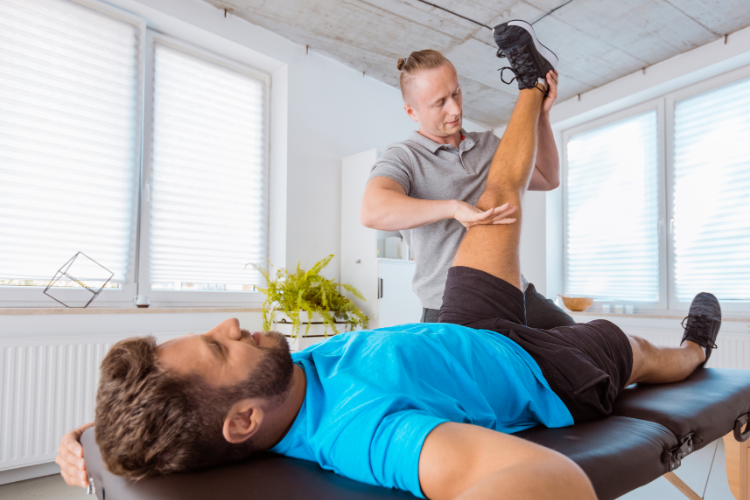With the NYC Marathon only two months away, many local runners seek ways to improve their performance and safeguard their bodies. At Park North Physical Therapy in Harlem and Morningside Heights, we're not only focused on holistic training techniques but also on the advanced methods to assess and improve your gait using specialized technology like Digitsole.
Our therapists have developed a list of cross-training exercises for runners to improve your athletic performance. Let us guide you through more productive running workouts in and out of the season.
What Is Cross-Training?
Cross-training involves the incorporation of various workouts to complement an athlete’s preferred sport and fitness goals. For example, runners might use stretching and strengthening techniques to increase endurance and prevent injury. You can apply cross-training to warm-up routines or set aside days to focus solely on cross-training.
Why Should You Cross-Train?
Runners should incorporate cross-training workouts for the numerous benefits they provide. You’ll not only enhance your overall performance, but you may also prevent knee, ankle injuries and other issues that could impact your time and distance.
>> If you’re curious about other ways Park North Physical Therapy helps patients prevent injury, learn about our state-of-the-art Digisole technology that offers a comprehensive analysis of your foot's pressure distribution and movement while running so that you can prevent injury.
Cross-training can also help your body recover in numerous ways. They can help provide:
- Sufficient breaks for your body and mind
- Better cardiovascular health
- Improved mobility
- Decreased injury risk
- Increased strength
- Prevent muscular imbalance
How To Use Cross-Training
You can easily integrate cross-training into your running routine by using it as active recovery. During a rest day from running, try a low-impact cross-training workout. For instance, if you run five days a week, consider swimming or cycling on one of your off days. You can also integrate cross-training after long runs by engaging in light yoga or stretching to reduce muscle tension.
Cross-training can also help keep your workouts more exciting. By varying different activities, you’ll also challenge different muscle groups which is important for injury prevention and overuse.
5 Cross-Training Activities for Runners
Some of the best cross-training exercises for runners are easy to implement. You’ll find the best and most accessible ones listed below. Try them out to see which works best for your routine:
#1 Strength Training
Many people associate strength training with sports like wrestling or weightlifting. However, runners can use strength training to improve their leg strength. Your legs propel your body forward throughout your run. The stronger they are, the further they’ll take you.
You can set aside a day or two each week for strength training routines. Focus on the calves, thighs, and glutes. A few chest and core exercises will help your diaphragm as well.
#2 Water Sports
Swimming, aqua jogging, and treading water allow you to work your muscles while eliminating weight from the equation. Aqua jogging and water treading work your leg muscles the same way running will. Swimming increases your heart rate and challenges your lung capacity while pushing your body’s resistance against the water.
Vary water sports with other cross-training techniques on days between your runs.
#3 Yoga
Yoga, Pilates, and other stretching methods are incredibly versatile, making them great cross-training options. You can implement these stretches as part of a warm-up. You can also join community classes for a weekly routine.
#4 Hiking
Hiking allows you to breathe fresh air, indulge in nature, and challenge your leg and core muscles. Most hiking trails feature various terrain and skill levels. You’ll improve your spatial awareness, agility, and situational awareness. Use hiking to increase and improve movement without overexerting yourself.
#5 Cycling
Finally, cycling gives your legs a challenging workout. Like swimming, this activity removes some of the body weight you carry through most exercises. It also gives your feet a much-needed break. You’ll still challenge your legs to push you to hilltops and through long stretches of road.
Rehabilitate Your Body, Improve Your Performance at Park North Physical Therapy
Your journey to peak physical health and performance doesn't have to be taken alone. At Park North Physical Therapy, we understand the unique challenges each individual faces, whether it's rehabilitating from an injury or pushing the boundaries of personal performance. We are committed to crafting a personalized recovery journey that aligns with your goals. With the right support and a tailored approach, you can recover, rejuvenate, and reach new athletic heights. Don't let setbacks keep you from your best self. Our therapists at Park North Physical Therapy can assist you in finding the best recovery regimen.
Call 212-222-6525 to book an appointment here.








